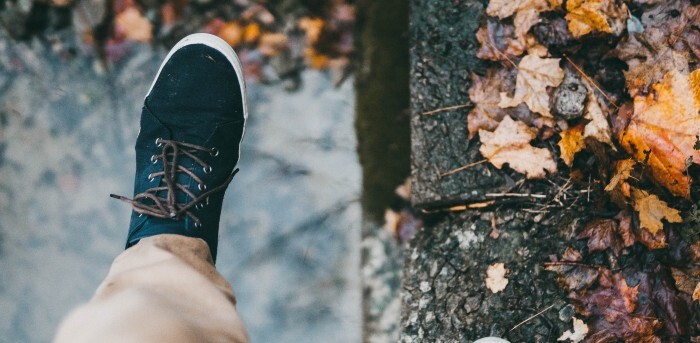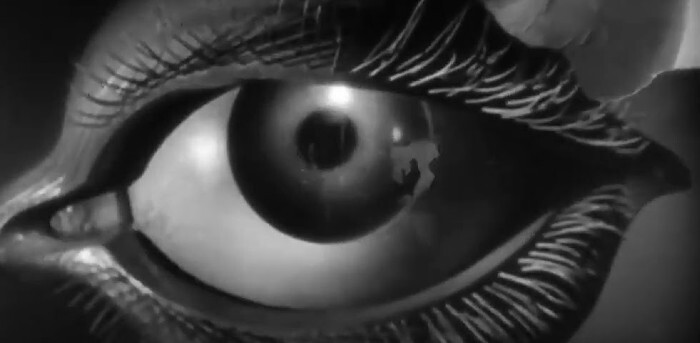15 Time-Bending Facts About Salvador Dali

These days, most of pop culture’s most public weirdos are actually pretty normal guys in their private lives who just happen to have unusual jobs. That was not the case for Salvador Dali. He was exactly as weird as you think he was, and probably even weirder.
He Believed He Was His Own Brother

Dali believed he was the reincarnation of his brother, also named Salvador, who was born and died nine months before his own birth, mostly because his parents told him so, explaining the whole thing when Dali was five at his brother’s grave. If you want your child to grow up to be a weird artist, that’s certainly one way to do it.
He Was an Attempted Child Murderer

Sure enough, Dali became a little freak right quick, adopting a habit of throwing himself down the stairs because “the pain was insignificant, the pleasure immense.” Perhaps in a misguided bid to share his sadomasochistic joy, he pushed a friend off a 15-foot bridge. The friend recovered and presumably went on to warn new kids on the playground, “Don’t talk to that kid, he tries to murder people.”
He Had a Thing With Ants

Ants show up in a lot of Dali’s art, and this wasn’t, as much of his art would seem to suggest, a random choice. He became fascinated with ants as a child after taking in a wounded bat, which soon became covered with ants. The sight delighted Dali so much that he put the bat in his mouth and bit it “almost in half.”
He Was Expelled From Art School (For Being a Pompous Ass)
He was actually expelled twice, both times on completely reasonable grounds. First, he started a riot, then he refused to take his year-end exam, explaining, “I am infinitely more intelligent than these three professors, and I therefore refuse to be examined by them. I know this subject much too well.” He went on to become Salvador Dali, so like, point taken, but anyone else would have deserved the deepest wedgie.
He Was Obsessed With Freud

You don’t have to spend a long time leafing through Dali’s dreamlike catalog to come to the conclusion that this guy was pretty into Freud, and once you find out he lost his doting mother at a young age, it really all falls into place. In fact, Dali traveled to Vienna several times hoping to meet the doctor, rehearsing imaginary conversations as he walked around the city, but when they finally encountered each other, he was mostly too nervous to speak. They were, by all accounts, “totally bewildered by each other,” though Freud later said “I was inclined to look upon the surrealists… as absolute (let us say 95 percent, like alcohol) cranks. That young Spaniard, however, with his candid and fanatical eyes and his undeniable technical mastery, has made me reconsider my opinion.”
And Hitler

(Bundesarchiv, Bild 183-H1216-0500-002/CC-BY-SA/Wikimedia Commons)
When Hitler rose to power, he did the same in Dali’s heart. The artist insisted he had no political or ideological sympathies for the dictator but often had sexual dreams about him and painted him feverishly, including a depiction of the Fuhrer masturbating. Because they were human, it made his surrealist friends uncomfortable enough that he was semi-officially expelled from the movement.
He Capitalized On Himself
Dali had none of the typical artist’s distaste for commercialism, or maybe he had an ironic fascination with it. No one ever really knew what that guy was thinking, but the result was that he became the face of a French chocolate company, appeared in commercials for Alka Seltzer and brandy, created ads for the Gap and Datsun, and even designed the Chupa Chup lollipops logo. In fact, he deliberately crafted his bizarre public persona to attract the most attention (and therefore money) possible.
He Worked With Hitchcock

(United Artists)
Alfred Hitchcock hired Dali to create a dream sequence for his 1945 film Spellbound, because when you have Hitchcock pull, that’s the guy you get for your dream sequence. ““But Dalí had some strange ideas,” the director later said. “He wanted a statue to crack like a shell falling apart, with ants crawling all over it, and underneath, there would be Ingrid Bergman, covered by the ants! It just wasn’t possible.” They eventually came to an agreement, although only two of the 20 minutes of footage they shot was actually used in the film.
And Disney

(Walt Disney Company)
The same year, Dali collaborated with Walt Disney, who he called one of the “great American surrealists,” on a short film called Destino, though after eight months of work, the project was shelved for financial reasons (Dali was kind of an expensive guy). It was finally completed by Disney the company, if not Disney the man, in 2003 and can now be seen on the modern surrealist platform of choice, YouTube.
He Had a Pet Ocelot

In the 1960s, coincidentally around the time people presumably started getting real sick of his shit, Dali bought an ocelot that accompanied him on a leash wherever he went. Whenever the people around him expressed fear of the cat, which he claimed to have bought from the Colombian Head of State, he told them it was just a normal house cat that he’d painted to look like an ocelot, which was, to be clear, totally untrue. It was absolutely a dangerous wild animal in the middle of a fancy New York City restaurant.
He Frequently Appeared on Game Shows
Perhaps as part of his fascination with American commercialism, Dali was a chronic game show contestant in the ‘50s, first appearing twice on a show with a difficult-to-explain premise called The Name’s the Same. It seems to have been practice for the big time, an appearance on What’s My Line? where he stymied the panelists by answering “yes” to almost every question.
He Had a Thing With Cauliflower
Twice, Dali drove around Paris in a limo full of cauliflower, once just handing them out to people and then showing up to a speech in a Rolls Royce full of ‘em, shouting that “Everything ends up in the cauliflower!” and later explaining to a journalist that he’d become enamored with “the logarithmic curve of cauliflower.” As usual, no one had any idea what he was on about.
He Refused to Sell Yoko Ono His Mustache
In 1969, Yoko Ono offered Dali $10,000 for a single hair from his mustache, which Dali refused, but not for any normal reason. He thought she was a witch and intended to do voodoo stuff with the hair, though her motivations were probably more along the lines of “I have enough money to buy Salvador Dali’s mustache hair, so obviously, I’m going to do that.” Instead, he sold her a dried blade of grass that she probably realized wasn’t a hair, but hey, it’s a weird enough transaction that it’s almost as good.
The Appropriately Unsettling Dali Museum

In 1960, Dali began the process of restoring the theater where he held one of his first art shows as the Dali Theatre and Museum (even though “Daliwood” was right there). He envisioned it as a place where visitors “will leave with the sensation of having had a theatrical dream,” and he more or less succeeded, filling it with bizarre installations like a living room set that, when viewed from a specific location, looks like Mae West’s face. After he died, he was buried in a crypt beneath the stage, so it’s definitely your best shot at encountering the most unnerving ghost.
His Mustache is Intact to This Day

In 2017, Dali’s remains were exhumed to settle a paternity claim, but the most surprising thing experts found, since it turned out he wasn’t the father, was that Dali’s mustache had remained perfectly in place in the nearly 30 years since his death. One witness at the site declared the discovery a “miracle,” proclaimed “Salvador Dali is forever,” and probably went on to start an incredibly niche religion.
Top image: Library of Congress/Wikimedia Commons